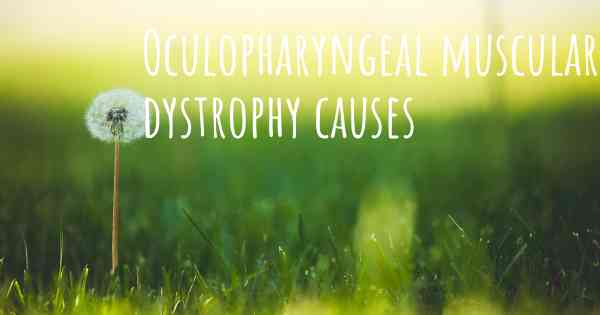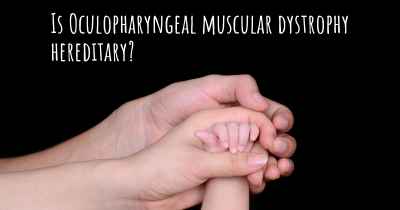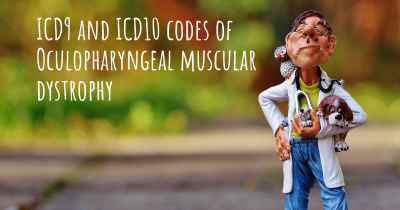Which are the causes of Oculopharyngeal muscular dystrophy?
See some of the causes of Oculopharyngeal muscular dystrophy according to people who have experience in Oculopharyngeal muscular dystrophy

Oculopharyngeal muscular dystrophy (OPMD) is a rare genetic disorder that primarily affects the muscles of the eyes and throat. It is characterized by progressive muscle weakness and wasting, leading to difficulties in swallowing, speaking, and moving the eyes. OPMD is caused by a mutation in the PABPN1 gene, which provides instructions for making a protein called polyadenylate-binding protein nuclear 1.
The PABPN1 gene mutation:
The PABPN1 gene mutation responsible for OPMD is an expansion of a trinucleotide repeat sequence, specifically a series of three DNA building blocks (nucleotides) called GCG. In unaffected individuals, the GCG repeat sequence is repeated 10 to 17 times within the gene. However, in individuals with OPMD, this repeat sequence is expanded to between 12 and 17 copies, resulting in an abnormal protein.
Protein aggregation and cellular dysfunction:
The abnormal PABPN1 protein produced as a result of the gene mutation tends to accumulate within the nuclei of muscle cells. These protein aggregates disrupt normal cellular processes, leading to muscle cell dysfunction and ultimately muscle degeneration. The exact mechanisms by which the protein aggregates cause muscle weakness and wasting are not fully understood, but it is believed that they interfere with important cellular functions such as protein synthesis and gene regulation.
Age of onset and inheritance:
OPMD typically manifests in adulthood, usually between the ages of 40 and 60. However, there have been cases of early-onset OPMD in individuals as young as their twenties. The severity and progression of the disease can vary among affected individuals, even within the same family.
OPMD follows an autosomal dominant pattern of inheritance, which means that an affected individual has a 50% chance of passing the mutated gene to each of their children. If an individual inherits the mutated gene from one affected parent, they will develop OPMD at some point in their life. In rare cases, OPMD can also occur due to spontaneous mutations in individuals with no family history of the disorder.
Genetic testing and diagnosis:
Genetic testing can confirm the presence of the PABPN1 gene mutation and aid in the diagnosis of OPMD. This involves analyzing the number of GCG repeats in the gene. In individuals with symptoms suggestive of OPMD, genetic testing can provide a definitive diagnosis and help differentiate the condition from other forms of muscular dystrophy.
Treatment and management:
Currently, there is no cure for OPMD, and treatment primarily focuses on managing the symptoms and improving quality of life. This may involve a multidisciplinary approach, including speech therapy to address swallowing and speech difficulties, physical therapy to maintain muscle strength and mobility, and nutritional support to prevent malnutrition due to swallowing difficulties.
Research and future prospects:
Scientists are actively studying the underlying mechanisms of OPMD and exploring potential therapeutic approaches. This includes investigating ways to prevent or reduce the formation of protein aggregates, developing gene therapies to correct the genetic mutation, and exploring the use of drugs that target the cellular pathways affected by the abnormal protein.
In conclusion, Oculopharyngeal muscular dystrophy is caused by a mutation in the PABPN1 gene, resulting in the production of an abnormal protein that forms aggregates within muscle cells. The exact mechanisms by which these protein aggregates lead to muscle weakness and wasting are still being investigated. Genetic testing can confirm the diagnosis, and current treatment options focus on managing symptoms and improving quality of life. Ongoing research offers hope for future advancements in the understanding and treatment of this rare genetic disorder.
Posted Apr 27, 2017 by OPMDAWARENESS 1000
Posted May 18, 2017 by Monica 2150
Posted Feb 22, 2021 by James 2500








